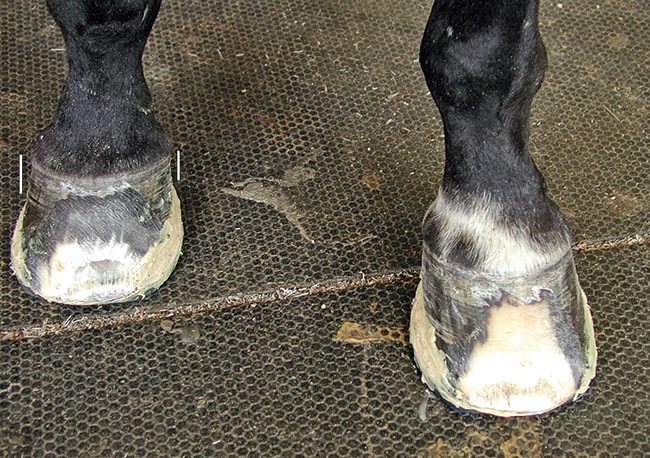American Farriers Journal
American Farriers Journal is the “hands-on” magazine for professional farriers, equine veterinarians and horse care product and service buyers.

The presence of a fever ring provides the farrier with a hint of what is happening internally within the hoof. In this laminitis case, increased growth on the lateral side of the right front foot indicates that the mare might have medial rotation of her distal phalanx. In the more traditional dorso-palmar rotational laminitis, the fever ring is wider at the heel than at the toe
If mild rings are present on all four feet, they are probably related to nutritional changes. The hoof is a complex, sensitive structure that responds to changes in a horse’s environment, health and nutrition.
The keratinized surface of the hoof wall consists of vertical growing tubules that form at the coronary band and grow down to the ground. The laminae and the soft tissues that the tubules suspend inside the hoof wall contain a web of blood vessels that provide nourishment to the hoof. In addition, they provide moisture and an entrance pathway for inflammatory cells.
Fever rings may be formed as a result of laminar hyperplasia (thickening and/or excess growth), which can be induced by inflammation that displaces the tubules outward. A ring may also develop as a result of the tubules buckling of under compression. Typically occurring in the moist area near the coronary band, this is often a result of a sudden increase in weight or weight bearing (possibly due to lameness in another limb).
When a…